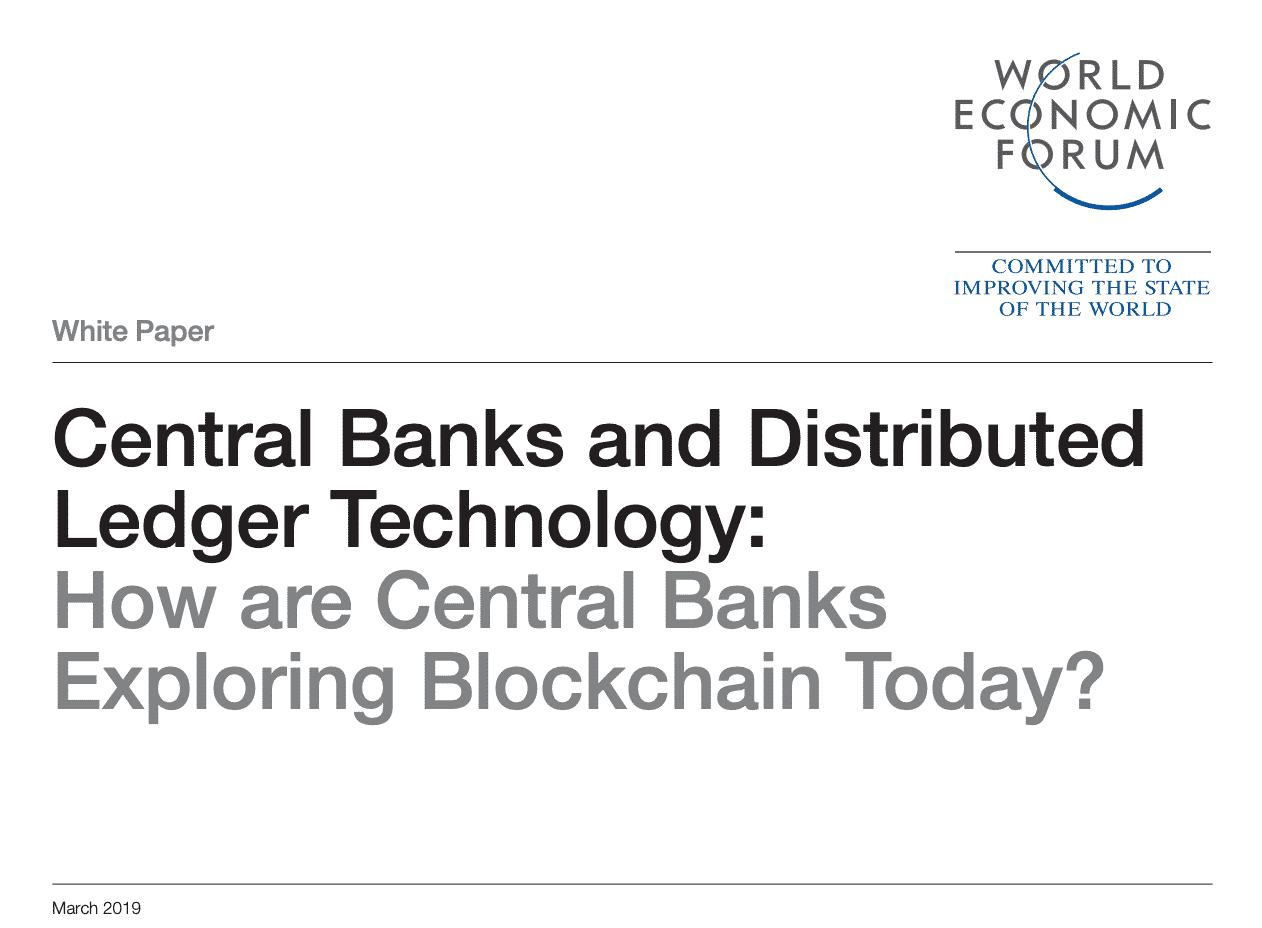
While central banks are known for being some of the most
cautious and prudent institutions in the world, chances are that these may become
among the first to implement blockchain and distributed ledger technology (DLT),
according
to a new white paper published by the World Economic Forum (WEF).
Dozens of central banks around the world are currently investigating
whether blockchain can help solve various issues in banking as well as improve
financial inclusion, and are conducting several research projects and pilots
with blockchain technology.
A January 2019 report by the Bank for International
Settlements (BIS) in Basel, Switzerland, suggests that at least 40 central
banks around the world are currently, or soon will be, researching and
experimenting with central bank digital currency (CBDC).
Over the next four years, WEF expects to see many central
banks decide whether they will use blockchain and DLT to improve their
processes and economic welfare. Their decisions to implement DLT and digital
currency technologies in the future will have “far-reaching consequences on
financial and monetary systems, domestic economies, and the welfare of citizens,”
WEF said, noting that DLT could help enhance efficiency, financial inclusion,
resiliency, and security in financial systems.
In the paper, titled Central Banks and Distributed Ledger
Technology: How are Central Banks Exploring Blockchain Today?, WEF details the
top ten blockchain use cases central banks are currently exploring. These
include:
- Retail CBDC: A central bank-issued digital currency that is operated and settled in a peer-to-peer (P2P) and decentralized manner widely available for consumers. The Swedish central bank (Sveriges Riksbank), for instance, is investigating a blockchain-based “e-krona” to serve as an alternative form of money as cash usage in the country declines.
- Wholesale CBDC: A decentralized, blockchain-based, central bank-issued digital currency available only for commercial banks and clearing houses.
- Interbank securities settlement: A focused application of blockchain-based digital currency, including CBDC, enabling the rapid interbank clearing and settlement of securities for cash. A relevant example is the German central bank (Deutsche Bundesbank), which is currently exploring DLT for multiple purposes including to improve efficiency and reduce risk in interbank securities settlement processes with the BLOCKBASTER prototype and other efforts.
- The use of DLT in a primary or back-up domestic interbank payment and settlement system, an application of blockchain the Central Bank of Brazil is actively exploring DLT.
- The use of DLT in the bond auction, issuance, or other lifecycle processes.
- Digital know-your-customer (KYC) and anti-money-laundering (AML) processes that leverage DLT to track and share relevant customer payment and identity information to streamline processes.
- Information exchange and data sharing between or within related government or private sector institutions.
- Faster, more efficient and more inclusive trade finance processes. The Hong Kong Monetary Authority has conducted research and experiments on multiple use cases including trade finance, digital identity management and KYC/AML processes.
- The use of DLT for issuing, tracking and managing the delivery and movement of cash from production facilities to the central bank and commercial bank branches.
- And customer SEPA Creditor Identifier (SCI) provisioning. The Bank of France, with project MADRE, has already fully replaced its centralized process for the provisioning and sharing of SCIs with a decentralized, blockchain-based solution.
The paper concludes that central banks in emerging countries,
where existing financial processes and technology systems may not yet be highly
efficient or deeply rooted, are likely to experience the greatest gains from
implementing DLT. Implementing CBDC or other blockchain-related applications
may enable them to achieve greater financial inclusion, the research says.

